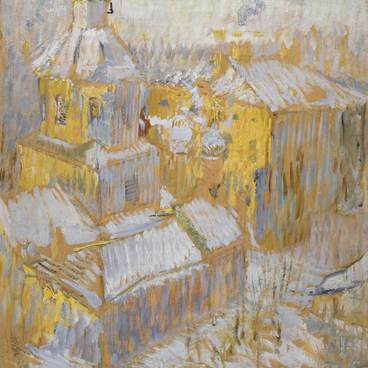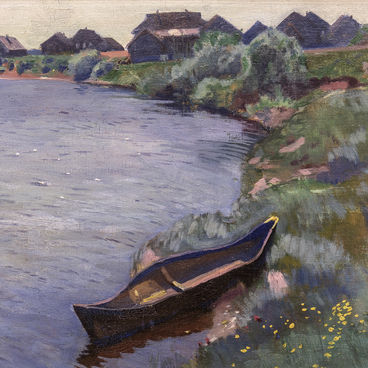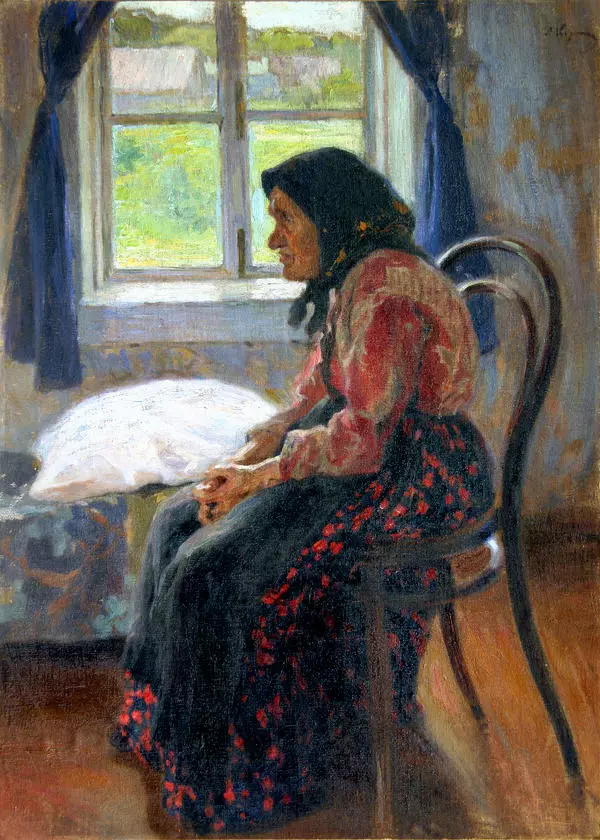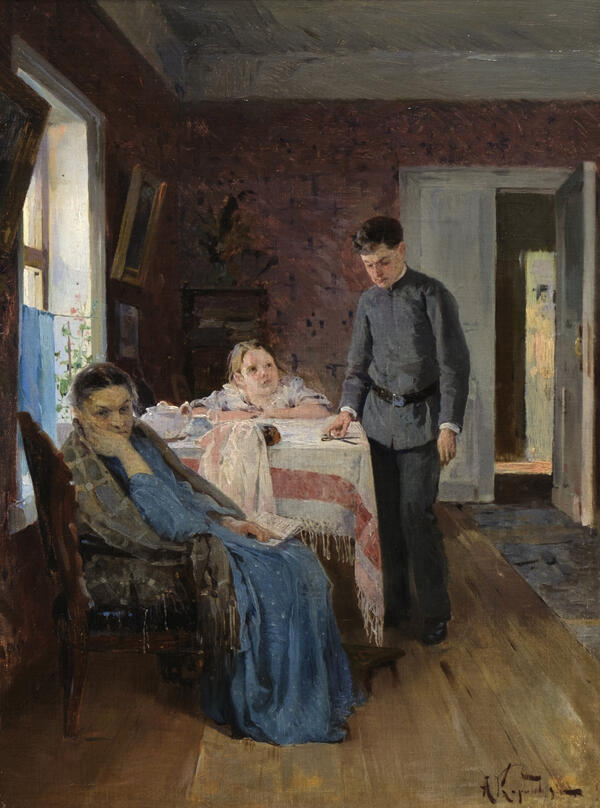Aleksey Korin came from a family of hereditary icon painters in the village of Palekh. Icon painting techniques were passed down generations, and he studied iconography under his uncle, Dmitry Nikolayevich Korin. He also attended a school at the Trinity Lavra of St. Sergius and a workshop in Moscow, where he gained extensive experience in drawing and painting. This experience allowed him to enroll straight in the figure painting class at the Moscow School of Painting, Sculpture and Architecture and graduate with a Grand Silver Medal in 1889.
Korin was a genre painter who captured scenes from everyday life. His large-scale painting “Meal”, painted in 1917 during a crucial time in Russia, stands out among his works. Around this time, he also created such reflective works as “Near the Monastery Wall”, “Old Russia”, and “Reflection”.
Several sketches for the painting “Meal” have been preserved, with the earliest ones dated to the 1890s. One of them is housed by the Yaroslavl Art Museum and is titled “Pilgrims Having Lunch at the Osannikov Monastery”. While the sketches depict scenes and impressions of monastic life, the painting “Meal” takes on a symbolic meaning. The multi-figure composition depicts pilgrims seated at a long table and awaiting food.
The figures are arranged in a continuous line, representing the endless flow of pilgrims who arrive at the monastery. The manner of painting and the color palette are reminiscent of the way cathedrals are painted. The composition is strict and simple, with nothing to distract from images turning into symbols. The art critic Natalya Korina even compared it to that in Andrei Rublev’s “Trinity”. Here in the painting, three women resembling angels — a young pilgrim and two novices distributing food — are highlighted in the center with white kerchiefs. One of them is holding a red bowl, and above it is the head of a pilgrim wearing a red kerchief.
At the back of the painting, there is another woman
in a white headscarf — a novice who is also distributing food. This way, four
white dots form a cross. According to Natalya Korina, these pilgrims sitting
around the table represent Russian people seeking the path to truth. The
overall composition and the title “Meal” convey the idea of bringing people
together on a spiritual level. A young woman in a white headscarf stands out
among the others, as she, unlike the other characters, looks directly at the
viewer. Korina sees this as a symbol of Russia that has “stood on the brink of
death many times but has always risen for a new spiritual life.”






